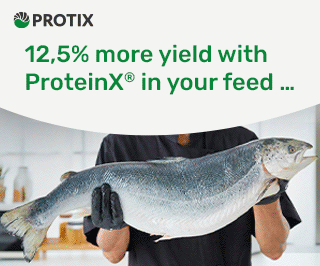Tariffs by the kilo: What the new U.S. salmon tax means for Norwegian fish.
As of today, the United States has imposed a 15% tariff on Norwegian salmon, part of a wider set of trade restrictions introduced by President Donald Trump. Norway, the largest supplier of Atlantic salmon to the U.S., now faces a significant new cost barrier in its most valuable seafood export market.
In the first quarter of 2025 alone, Norway exported NOK 3.4 billion ($323 million) worth of salmon to the U.S., up 47% in value year-on-year. The tariff threatens to slow this momentum.
What does this mean in practice?
A typical 5–6 kg head-on gutted (HOG) Atlantic salmon currently sells at U.S. wholesale for around $8.50 per kilo, according to market sources. That puts a 5.5 kg fish at roughly $46.75. With the new 15% tariff applied, the price jumps to $53.76 — a difference of more than $7 per fish.
📌 All prices are illustrative and based on indicative U.S. wholesale data. Real-world outcomes will depend on freight, contracts, and how costs are absorbed or passed on.
What are customs duties?
Customs duties (or tariffs) are taxes imposed on goods entering a country. The importer pays this cost at the border, and the revenue goes to the state that imposed it. Companies can then either absorb the cost or pass it on to consumers.
Governments use tariffs for three main reasons:
-
To protect domestic industries by making imported goods more expensive.
-
To raise revenue.
-
As a bargaining tool in trade negotiations — a rationale emphasized by Donald Trump.
By increasing the cost of foreign goods, the idea is that consumers will turn to domestic alternatives. However, critics argue that such tariffs can increase inflation and reduce consumer choice.
Why does this matter to Norway?
Norwegian exports to the U.S. are now more expensive. That could make U.S. buyers look elsewhere — especially to countries facing lower tariffs. Chile, Iceland, the UK, Australia, New Zealand, and the Faroe Islands all face a 10% tariff, while salmon from EU countries is now subject to a 20% duty.
In addition to potential loss of market share, Norway also faces broader economic pressure. Tariffs raise prices, and higher prices can fuel inflation. If inflation persists, Norges Bank may delay planned interest rate cuts — potentially increasing costs for households and businesses alike.
Norwegian officials have so far indicated that no immediate countermeasures are planned, but stress that tariffs now apply to more than NOK 60 billion ($5.7 billion) worth of annual Norwegian exports to the U.S.
As one exporter told SalmonBusiness earlier this week, “We’re still waiting to see how much of this actually gets passed on to the customer.”
For now, the only certainty is that Norwegian salmon just got more expensive in its most lucrative market.



